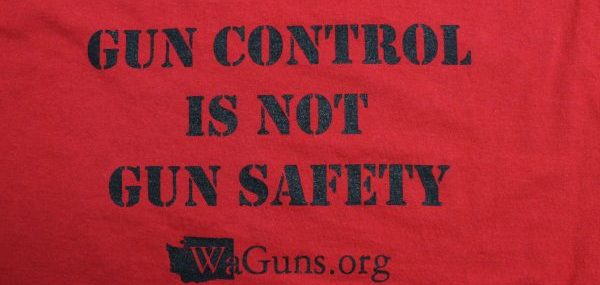
Reporting on a “troubling” trend in random killings involving homeless people in Seattle and King County, Washington, a Seattle Times story has the unintentional consequence of revealing how homicides in the county that overwhelmingly supported a pair of restrictive gun control initiatives have actually gone up since the measures were passed.
Whether anyone will ask backers of Initiatives 594 (in 2014) and 1639 (in 2018) about this when they gather for a rally this Saturday at Seattle City Hall about this remains to be seen. But thanks to the newspaper, which backed both gun control measures, the homicide data is there for all to see.
According to the Times, last year saw 78 slayings in King County (including Seattle’s 31) while 2017 ended with 74 homicides and 2016 produced 66 murders. Equally damning is the notation that, “But preliminary FBI data for the first half of 2018 show a 6 percent decrease in homicides in metropolitan areas from the same period in 2017, compared to The Seattle Times count that shows an overall 5 percent increase from 2017 to 2018.” There were 27 slayings in Seattle in 2017, the Times report recalled.
On top of that, according to the FBI Uniform Crime Reports for 2016 and 2017, there were 195 and 228 slayings, respectively, statewide. In 2016, 127 of those murders involved firearms and in 2017—the most recent year for which complete data is available—134 of the slayings involved guns.
Not all of the Seattle/King County homicides involved firearms. But the end result is that in the aftermath of adopting citizen initiatives that were sold to the public as “gun safety” schemes to reduce violence, more people have been killed, and regardless of the weapon used, the victims are just as dead. Perhaps a T-shirt produced by WaGuns.org, an activist group, says it all:

It took two years before there was a single prosecution for a violation of I-594, the so-called “universal background check” measure passed after a $10 million campaign in 2014. And even then, it didn’t prevent a murder, it simply prosecuted an individual for selling the firearm used in the murder without going through the obligatory background check process.
In a “Q&A” on I-594, when explaining the benefits of passing the measure, proponents asserted, “There is abundant evidence that background checks reduce crime and save lives.” That is hardly what the Seattle/King County data demonstrates, and where crime reduction is concerned, that’s a question best posed to the owners of Fred’s Gun in Sequim. Over the weekend, according to the Peninsula Daily News, somebody using an agricultural loader smashed through the gun shop wall and stole at least 20 handguns. There definitely was no background check involved, nor will there be if or when those hot guns make their way into the criminal black market.
The Seattle Times story included mentions of slayings that involved murder weapons other than guns. One man was stabbed to death, another bludgeoned. Yet, it has become almost obligatory for media reports to identify firearm-related slayings as “gun violence,” yet there is no similar demonization in fatal stabbings to identify them as “knife violence,” for example.
In Olympia this year, there was an effort to pass a restrictive training requirement for concealed pistol licenses in what appears to have been an attempt to discourage Washingtonians from applying for or renewing their CPLs. Washington has never required training to exercise a fundamental right to bear arms that is protected by both the state and federal constitutions. Evidently, lawmakers decided this was not the time to start, especially with more than 616,000 active CPLs, which translates to as many likely angry voters in 2020.
Considering the Times story, it’s not clear what adding another restriction on law-abiding Washington gun owners would have accomplished.